
Labels, Placards and Marks – What They Are and Why They Matter
A question came up recently from a customer who was trying to find some information in the regulations about when to put identification numbers on placards. They’d looked up “placards,” and yet the information wasn’t there. It turns out that’s because the identification number, even when shown on a placard, is not categorized as a placard. It’s something called a “mark.” The customer also wanted to know about “placards for packages,” and we explained that those weren’t placards, they were “labels.” However, the tab on the sticker that included the shipping name and identification number wasn’t a part of the label. They were also, you guessed it, marks.
This terminology can be confusing, whether you’re trying to order product or just find the relevant sections in the regulations. So, let’s take a deep dive into the differences between labels, placards, and marks.
Placards
The most visible type of warning symbol in the hazardous materials transportation system is the PLACARD. Placards are diamond-shaped symbols that identify the class of hazardous materials in a large container (or, for mixed loads, show the word “DANGEROUS” or “DANGER” instead of a class.) They allow emergency responders to identify hazardous materials in the field from a safe distance. Using binoculars, placards can be seen for hundreds of feet.
Unfortunately, each regulation has a different description of what containers require placards. In the U.S. “Hazardous Materials Regulations” of Title 49 of the Code of Federal Regulations (49 CFR), section 172.504 requires placards as applicable on “bulk packagings, freight containers, unit load devices, transport vehicles or rail cars.” On the other hand, Canada’s “Transportation of Dangerous Goods Regulations” (TDGR) requires placards on “large means of containment,” which are defined by TDGR as packagings exceeding 450 Litres in capacity. This could cover bulk containers, such as tank trucks or railway tank cars, smaller bulk containers such as totes and any vehicles such as trucks or boxcars carrying dangerous goods.
Placards are large, since they’re required for large containers, and need to be visible. The standard size for a placard is 250 millimetres per side, although in some cases they can be made smaller. In Canada, placards are non-worded except for the “DANGER” placard for mixed loads. (Class 7 placards may also be worded.) In the United States, wording is usually optional on placards (with a few exceptions such as the mixed load placard, which in the U.S. says “DANGEROUS”.)
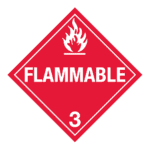 |
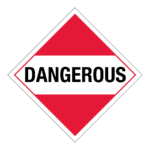 |
In 49 CFR, placards have their own area, Subpart F of Part 172. This makes them easy to distinguish from labels and other marks. In TDGR, it’s a little less organized, since they’re lumped in with labels and marks in Part 4, “Safety Marks.”
When buying placards, make sure that they’re suitable for intended conditions of transport, because they will normally be exposed to the elements.
Labels
In general, labels are like placards, only smaller, because they are for identifying smaller packages. These diamond-shaped symbols have a standard size of 100 millimetres (4 inches) per side. Again, Canadian labels are normally non-worded (except for infectious substances and radioactives, which must be worded in English and French.) 49 CFR makes wording on U.S. labels optional for most classes, but still required for infectious and radioactive substances.
TDGR says labels must be displayed on “small means of containment,” which are packagings not exceeding 450 Litres capacity. They are also an option for identifying intermediate bulk containers (IBCs), which are usually between 450 and 3000 Litres capacity. You’ll only need one label per package, except for radioactives and IBCs, which would require labels on two opposite sides.
In the U.S., it’s a little more complicated, but is spelled out in Subpart D of Part 172 of 49 CFR. Section 172.400 states that labels are required on package or containment devices which are:
- non-bulk packages;
- bulk packagings, other than cargo tanks, portable tanks, or tank cars, with a volumetric capacity of less than 18 m3 (640 cubic feet), if you choose labels instead of placards;
- Portable tanks of less than 3785 Litres (1000 gallons) capacity, if you wish to use labels rather than placards;
- DOT Specification 106 or 110 multi-unit tank car tanks, if using labels instead of placards; or
- overpacks, freight containers or unit load devices, of less than 18 m3 (640 cubic feet), which contains a package for which labels are required, unless placarded or marked in accordance with § 172.512.
To sum up, in the U.S. labels are for non-bulk packages and certain overpacks, freight containers and bulk containers which are on the smaller end of the scale. Again, labels are usually only required on one side for non-bulk packages other than radioactives.
To confuse terminology even further, there are a number of graphic symbols used for air transport in the IATA Dangerous Goods Regulations (DGR) that are called “handling labels.” These include the Cargo Aircraft Only label, the Magnetized Material label, and the Orientation label (which in 49 CFR is classified as a mark, just to complete the confusion.)
Marks
If a graphic, word or number must be displayed on hazmat, if it’s not a label or placard it must be a mark. Marks give extra warnings to make the identification and proper emergency response of substances visually obvious, but they don’t identify the hazard class of the substance. Remember, in the U.S. these are given their own subpart in 49 CFR, Subpart E of Part 172. There are a lot of possible marks, but common ones include:
-
Shipping Name and Identification Number (Small Containers)
Probably the most common marks found in non-bulk shipment is the shipping name and identification number. These marks must be placed beside the labels on non-bulk packages (small means of containment) and identify the contents to handlers as well as emergency responders.Sometimes, for convenience, you’ll see a little tab extending from the side of the label, where the shipping name and identification number marks can be printed or written. This design, called the “shipping name label” at ICC, includes one label and two marks on one adhesive backing.
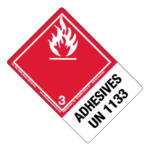 |
-
Identification Numbers (Large Containers)
Larger versions of the identification numbers are often seen on road and rail containers, and are usually (but not always) shown in the centre of placards. However, don’t get confused – they’re not found in the placarding section, because they’re marks! Identification numbers are usually required for bulk shipments (or, as TDGR more awkwardly puts it, large means of containment without inner packages). They are also required in other special situations, such as when an Emergency Response Assistance Plan (ERAP) is required in Canada, or if the shipment contains a Toxic Inhalation Hazard substance in the United States.There are three ways identification numbers may be shown on containers:
a. On the centre of the placard, in a white rectangle. This is how they’re usually shown, since you only have to put one physical item up on each side.
b. Beside the placard, on an orange rectangle. This may be useful if the centre of the placard is already taken up with a warning (such as the “INHALATION HAZARD” marking) or if, for example, a truck carries multiple IBCs of one class but with different identification numbers, so they can’t all be placed on one placard.
c. On a diamond-shaped backing that can fit into a typical placard holder, but which only shows the UN This is often seen in the U.S. for situations where bulk containers of Class 9 material are excepted from having to show the Class 9 placard. However, they’re still bulk, so they require the identification number, which, as you remember, is a mark not part of the placard itself.
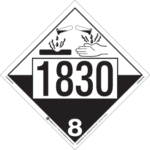 |
 |
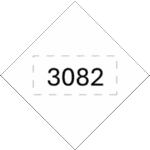 |
-
“Hot”
Both the U.S. and Canada have a special designation for materials which are shipped at what are called “elevated temperatures” (more than 100 degrees Celsius for liquids, or more than 240 degrees Celsius for solids). There are two versions of the “HOT” marking – in the U.S., it’s simply the word “HOT,” which may be displayed as a sign or on a diamond-shaped backing beside the other required marks or placards. However, in Canada, the mark is a triangular shape containing a stylized thermometer, which isn’t language-specific.
|
|
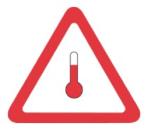 |
-
“Orientation” Marks
Orientation symbols have a bit of an identity crisis. In 49 CFR, the arrow design to show the required orientation packages is classified as a mark. In the IATA DGR, as we saw, they’re not considered marks but “handling labels,” a category not found in other regulations. And under Canada’s TDGR, they don’t exist! Yes, in Canada orientation marks may be used if you wish, but they’re not mentioned at all in TDGR.
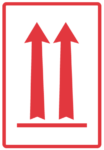 |
-
Lithium Battery Mark
This mark is quite common these days. The square or rectangular-shaped mark is used to identify low-powered lithium batteries in both 49 CFR and TDGR. High-powered lithium batteries would have the lithium battery class 9 label, a special design just for these types of batteries.
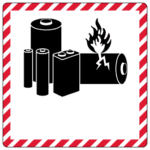 |
-
Other Marks
There is a wide range of other marks which may be required depending on the type of shipment. Some of these include:
a. Environmental Hazard (Marine Pollutant) mark
b. Markings for inhalation hazards
c. Limited Quantity mark
d. Excepted Quantity mark
e. Keep Away from Heat mark (which again, in the IATA DGR, is classified as a “handling label” rather than a mark)
Again, to find out how to use these marks, make sure you’re looking in the appropriate section of the regulations. For example, even though the Environmental Hazard symbol is a diamond, don’t look under “labels,” since it’s a mark.
Conclusions
Figuring out how to identify your hazardous materials can be difficult, particularly when the terminology used in the regulations can be so confusing. But don’t despair. Check out the ICC Compliance Center’s Help Center! Or contact our team of experts at 855.734.5469 or send us an email, we’re happy to help.
Stay up to date and sign up for our newsletter!
We have all the products, services and training you need to ensure your staff is properly trained and informed.
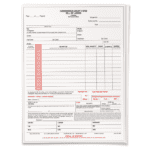 Bill of Lading Forms Bill of Lading Forms |
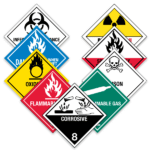 Placards Placards |
References
Transport Canada, “Transportation of Dangerous Goods Regulations,” https://laws-lois.justice.gc.ca/eng/regulations/sor-2001-286/
Transport Canada, “Dangerous Goods Marks,” https://tc.canada.ca/en/dangerous-goods/safety-awareness-materials-faq/industry/dangerous-goods-marks
U.S. Department of Transportation, “Hazardous Materials Regulations,” Title 49 of the Code of Federal Regulations, https://www.ecfr.gov/current/title-49/subtitle-B/chapter-I/subchapter-C/part-172/subpart-D


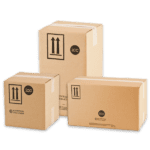

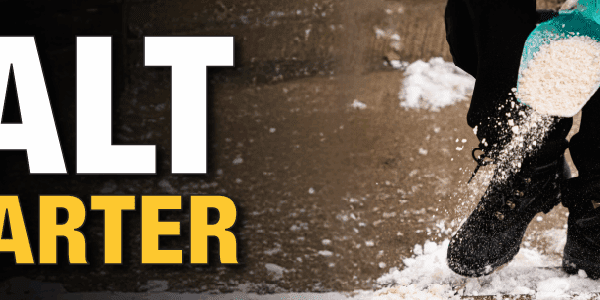
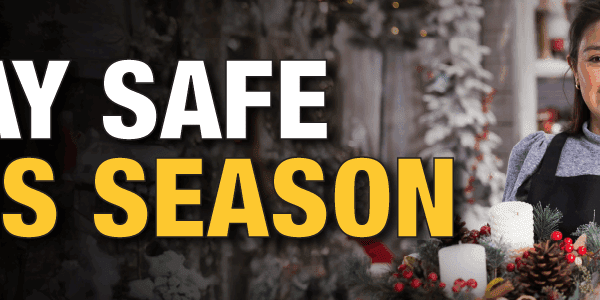


 ICC USA
ICC USA ICC Canada
ICC Canada